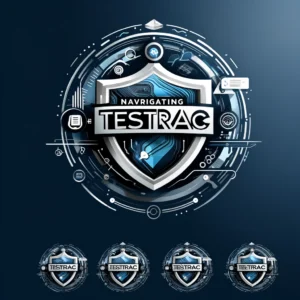Enhancing the Exam Experience with LockDown Browser: Utilizing External Links and Files
In the realm of online education, maintaining the integrity of assessments is paramount. LockDown Browser has emerged as a powerful tool to uphold this integrity by restricting certain actions during online exams. At first glance, it might seem counterintuitive to praise a tool for its ability to limit functionality, but these limitations are precisely what make LockDown Browser so effective in securing the exam environment. However, this raises an important question: If LockDown Browser is designed to lock down a student’s computer during an assessment, can instructors still incorporate external resources such as websites, PDFs, images, media files, and spreadsheets into their exams?
The answer is a resounding yes. LockDown Browser not only allows for the inclusion of such resources but does so in a manner that maintains the exam’s security. Let’s delve deeper into how you can effectively use these resources while leveraging the full capabilities of LockDown Browser.
Utilizing External Web Pages in Assessments
Instructors often wish to direct students to specific external websites during an exam to enhance the learning experience or to provide additional context for questions. LockDown Browser accommodates this by opening any links to external web pages in a new, locked window. Students can view the content on the new page, but any further navigation is blocked as all additional links on the page are disabled. This ensures that students remain focused on the content relevant to the exam without the risk of straying onto unrelated websites.
For example, if a question requires students to analyze a case study from a specific website, they can view the material in a controlled manner. Even if the webpage includes a search function, LockDown Browser automatically disables it, thus preventing any unauthorized searches during the exam.
Attaching PDF Documents Securely
PDF files are commonly used in exams to present reading materials, charts, or diagrams that students need to refer to when answering questions. With LockDown Browser, instructors can seamlessly incorporate PDFs into their exams by providing a link to the document (e.g., http://www.example.com/math.pdf). The PDF will open in a new, secure window within the browser.
However, it’s important to note that most PDF viewers, including Adobe’s, come with built-in functions to save or print the document. To prevent students from saving or printing the PDF during the exam, instructors should use PDF creation tools that allow for security settings. By configuring these settings to restrict printing and saving, the integrity of the exam is further safeguarded.
Integrating Audio and Video Files
Multimedia elements such as audio and video files can significantly enrich the online exam experience, catering to different learning styles and adding depth to the questions. LockDown Browser fully supports the inclusion of these elements. When a test question includes a link to an audio or video file, the file will open in a new tab within the browser, allowing students to listen to or view the content without leaving the secure exam environment.
For instance, language instructors might include a listening comprehension question where students need to listen to an audio clip before answering. Similarly, a history exam might feature a video clip that students must watch to analyze a historical event. LockDown Browser ensures that these resources are accessible while maintaining exam security.
Incorporating Spreadsheets into Exams
LockDown Browser also supports the use of spreadsheets, which are essential for exams in subjects like mathematics, economics, or data analysis. Instructors can include a link to an Excel (.xls/.xlsx) spreadsheet within the quiz question. When students click on the link, LockDown Browser opens an Excel-like tool where they can view and manipulate the spreadsheet.
This feature allows for complex problem-solving questions where students might need to perform calculations, create graphs, or analyze data. The spreadsheet can be pre-populated with data or provided as a blank template, depending on the exam’s requirements. For more detailed instructions on using spreadsheets in LockDown Browser, instructors can refer to the Knowledge Base.
Unlocking Creativity in Secure Assessments
While LockDown Browser is designed to restrict activities that could compromise the integrity of an exam, it doesn’t limit an instructor’s creativity in designing assessments. On the contrary, it provides a secure framework within which instructors can incorporate a wide range of rich content, from external web pages and PDFs to multimedia files and spreadsheets. By understanding and utilizing these capabilities, instructors can create robust, engaging, and secure online exams.
Enhance Your Exam Experience
To maximize the potential of LockDown Browser in your assessments, consider exploring additional resources and tutorials available online. Whether you’re looking to refine your approach or introduce new elements into your exams, continuous learning and adaptation will ensure that your online assessments remain effective and secure.
Interactive Elements for Enhanced Learning
To further enhance the learning experience, consider integrating interactive elements such as clickable image maps, embedded quizzes within videos, or scenario-based questions that require students to interact with multimedia. These features not only make exams more engaging but also provide a more comprehensive assessment of student understanding.
By embracing the full range of capabilities offered by LockDown Browser, educators can create online exams that are not only secure but also dynamic and reflective of real-world scenarios. This approach not only maintains the integrity of the assessment but also enriches the overall learning experience for students.




